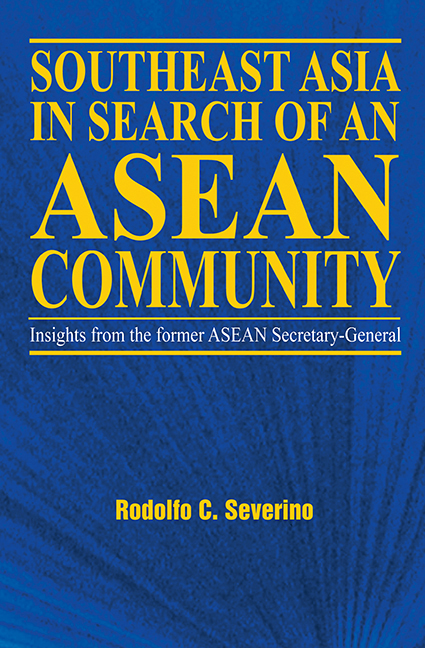Book contents
- Frontmatter
- Contents
- Foreword
- Introduction
- About the Author
- Acknowledgements
- Glossary
- 1 The “ASEAN Way”: Its Nature and Origins
- 2 Who Belongs in ASEAN? The Question of Membership
- 3 The Issue of Non-Interference
- 4 Regional Security: The ASEAN Role
- 5 Integrating the Regional Economy
- 6 ASEAN and the World
- 7 The ASEAN Community: Is It for Real?
- 8 What Kind of Future for ASEAN?
- Appendices
- Interviews
- Index
3 - The Issue of Non-Interference
Published online by Cambridge University Press: 21 October 2015
- Frontmatter
- Contents
- Foreword
- Introduction
- About the Author
- Acknowledgements
- Glossary
- 1 The “ASEAN Way”: Its Nature and Origins
- 2 Who Belongs in ASEAN? The Question of Membership
- 3 The Issue of Non-Interference
- 4 Regional Security: The ASEAN Role
- 5 Integrating the Regional Economy
- 6 ASEAN and the World
- 7 The ASEAN Community: Is It for Real?
- 8 What Kind of Future for ASEAN?
- Appendices
- Interviews
- Index
Summary
Perhaps, the most prominent issue raised by the media, some politicians and other public commentators against the Association of Southeast Asian Nations has been its policy and practice of not interfering in its members’ internal affairs. Some have even called it a “doctrine”, something ideological and, therefore, to be adhered to at all cost and under all circumstances. The frequent implication is that the “doctrine”, policy or practice is peculiar to ASEAN, as if the association had invented it. Sometimes, the criticism amounts to heckling or jeering. The public complaints have arisen in recent years, most of them in commentaries about certain events or situations in Southeast Asia. The leading issues have been East Timor, the haze arising from land and forest fires in Indonesia, the financial crisis of 1997–98, and, above all, Myanmar and the question of human rights in general. Most of the commentaries do not specify what precisely ASEAN as an association or its member-states should have done about these situations; they have generally been appeals simply to “do something” about the problem, blaming ASEAN's failure to act on the member-states’ rigid adherence to the principle of non-interference. There seems to be an element of frustration in this, in the face of the international community's apparent helplessness or the region's inaction. The frustration is vented on the most visible entity in the area, ASEAN itself. In the light of this, let us examine each of the events and situations cited above and what, if anything, ASEAN did about them or could have done about them. But, first, a few facts.
The “doctrine” of non-interference or, more precisely, the policy and practice of states committing themselves to refrain from interfering in one another's internal affairs has been around for a long time, long before ASEAN was born — or conceived. It has, in fact, been the underpinning of the entire system of inter-state relations since the 1648 Treaty of Westphalia. After four years of negotiations, that voluminous treaty put an end to the Eighty Years’ War between the Dutch and the Spanish.
- Type
- Chapter
- Information
- Southeast Asia in Search of an ASEAN Community , pp. 85 - 160Publisher: ISEAS–Yusof Ishak InstitutePrint publication year: 2006



